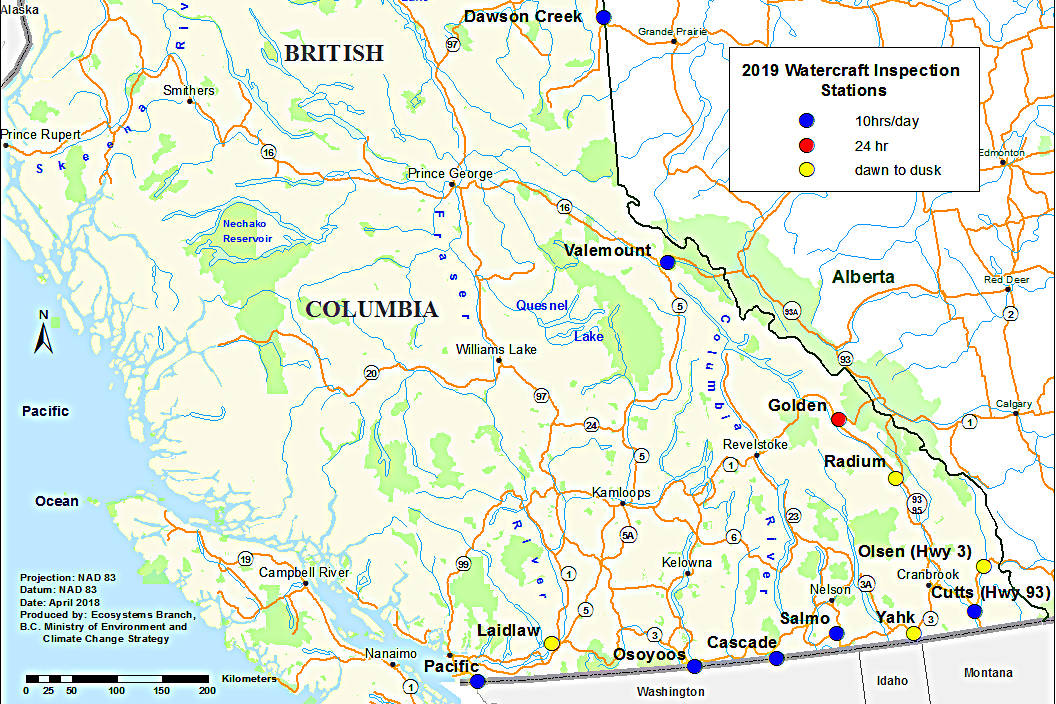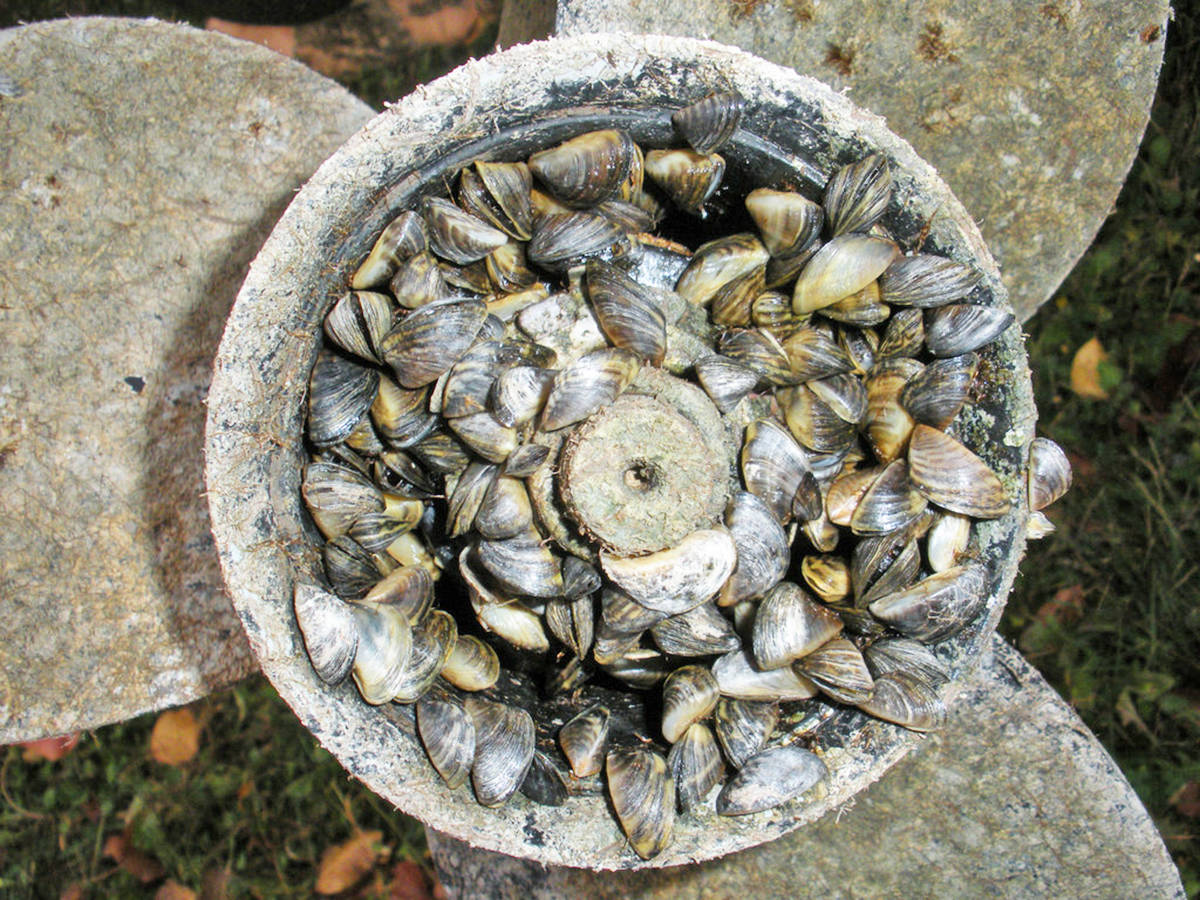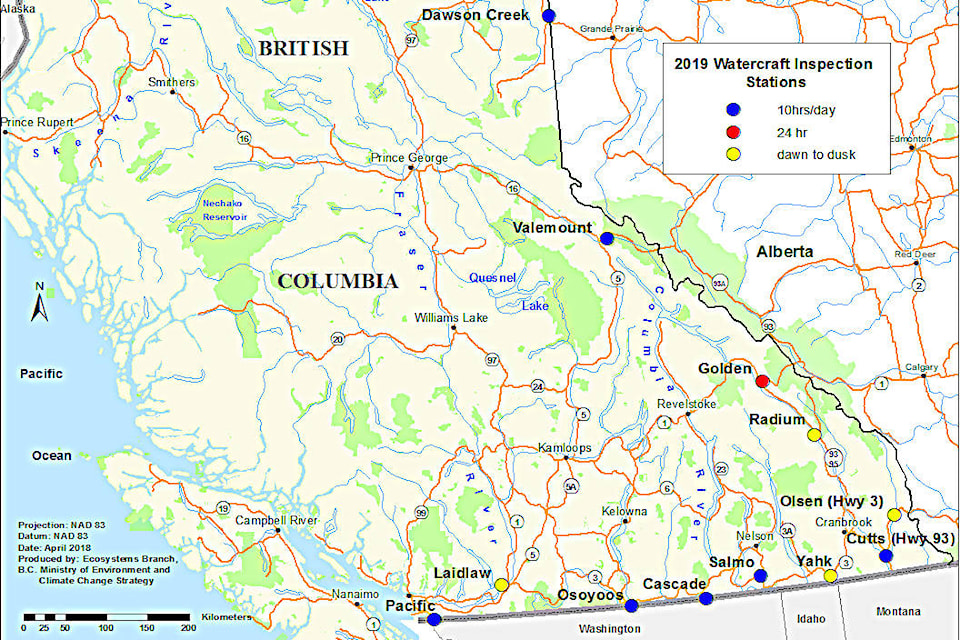While lake sampling this spring and summer for invasive mussels in the Columbia Shuswap region looked good, several watercraft carrying the threatening species were found while they were entering B.C.
A B.C. Invasive Mussel Defence Program report from late April to Sept. 15 of this year shows that out of more than 50,000 inspections, 1,240 were considered high risk while 19 were found carrying invasive zebra or quagga mussels.
Fourteen of the 19 were entering B.C. from Ontario, two from Michigan, two from Utah and one from North Carolina. Eight were headed for the Lower Mainland, four for Vancouver Island, three to the Okanagan, two to the Kootenays, one to Skeena and one to Alaska.
The seasonal program ended in October and final numbers are expected soon.
#CleanDrainDry boats and other watercraft to prevent transporting #invasive zebra and quagga mussels. Protect BCâs lakes, streams and wetlands. #TakeAction & download the fact sheet for more info https://t.co/Mwv0k2H2Jq#BCinvasives pic.twitter.com/6FVql3IEAY
— ISCBC (@ISCBC) October 30, 2019
According to B.C. Watercraft Inspection Stations, high risk includes:
• any watercraft or equipment that has been launched in any waters of a province or state known or suspected of having zebra or quagga mussels in the past 30 days.
• Any watercraft or equipment that is coming from or is registered to a state or province that is known or suspected of having zebra or quagga mussels and is not clean, and to the extent determined as practical by inspectors has not been drained and dried is considered high-risk, even if it has been out of the water for more than 30 days.
• Any watercraft that is dirty, crusty or slimy with the potential risk of transporting other aquatic invasive species.
Columbia Shuswap Invasive Species Society staff sampled 11 water bodies across the region for invasive mussels in summer 2019.
They sampled for adult mussels by installing substrate samplers, which are collections of different substrates on ropes lowered into the water and checked every two to four weeks. No sign of adult mussels were found on any of the 16 samplers deployed.
Staff also took 139 plankton samples from 27 locations on nine water bodies, searching for the larval stages of the mussels. So far all samples analyzed have been mussel free.
Sue Davies, head of the sampling project, said finding microscopic larvae of invasive mussels in a lake the size and shape of Shuswap Lake is challenging, but the more sites and more samples the better. She pointed out that Cinnemousun Narrows is an important place to sample because half of Shuswap Lake flows through the narrow strait and tends to eddy in one particular spot.
A Columbia Shuswap Invasive Species Society video demonstrates the impacts of invasive species.
North Okanagan-Shuswap MP Mel Arnold finds it troubling that so many high-risk watercraft are entering the province.
He states that 80 per cent of the last federal budget went to two invasive species in the Great Lakes, while 20 per cent was for the rest of the program.
Arnold was a member of the standing committee on fisheries that compiled a report on aquatic invasive species. Eight of the nine recommendations were about preventing the introduction of the species.
Read more: Detective dog, from Nelson, joins fight to combat invasive mussels
Read more: Okanagan dock owners urged to monitor for invasive mussels
Read more: Invasive mussels campaign ramps up for May long weekend
“The cost of prevention is fractional compared to the cost of treatment. They’re proably a greater ecological threat to the province than a massive wildfire,” Arnold contends, pointing out that trees can be grown after a fire. The mussels, however, could wipe out the sockeye fry and related food chain, as well as clog water intake pipes completely.
Arnold is in favour of increasing the use of sniffer dogs trained to detect the mussels, as well as increasing signs at borders and having full-time staffing at check points at all points of entry.
“I’m going to work with my colleagues in the Okanagan to put pressure to recognize the risks and to resource the program properly,” Arnold said.
@SalmonArm
marthawickett@saobserver.net
Like us on Facebook and follow us on Twitter


